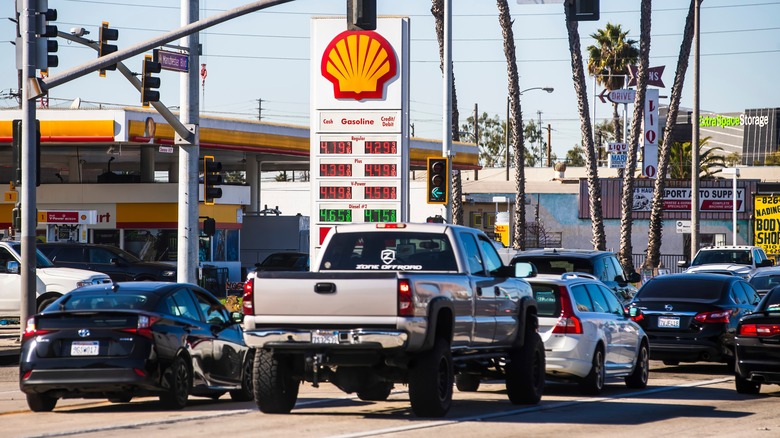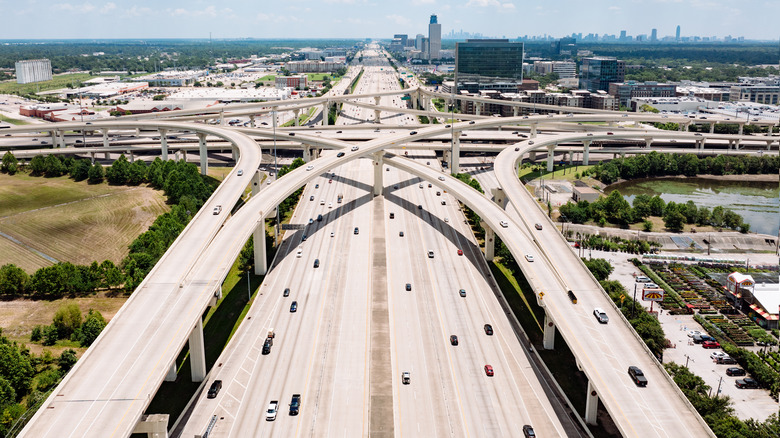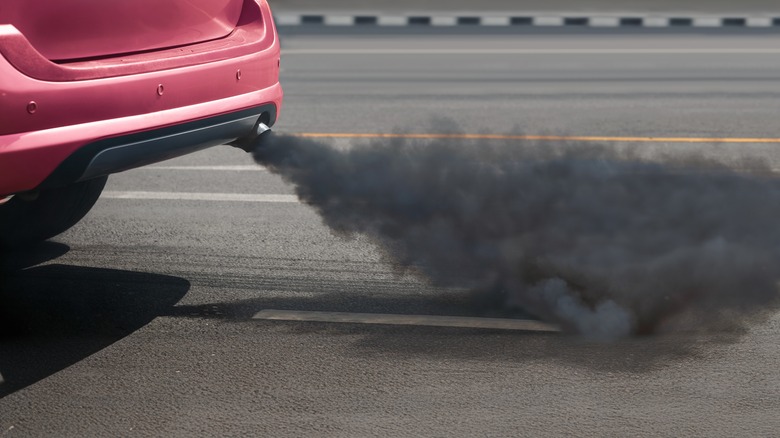Are Short Trips Bad For Your Diesel Engine?
The reputation of diesel-engined cars suffered irreversible damage thanks to the Volkswagen Dieselgate scandal, even though many diesel cars have proven to be far more efficient than their gasoline-powered counterparts. Despite that, diesel cars are slowly but surely going the way of the Dodo, even in Europe, where they have traditionally been most popular. However, Ford, GM, and Ram all continue to offer diesel trucks in America as heavy-hauling alternatives to the most popular gas powerplants. If you own a diesel, whether that be an older diesel car or a more modern diesel truck, you've probably heard the advice that doing lots of short journeys is bad for the engine.
While it's true that only ever driving short journeys in a diesel will almost certainly result in big repair bills later down the line, it's not quite as simple as saying that any short journey is automatically damaging the engine. Doing a mix of shorter and longer trips won't necessarily have a negative impact, as long as you still consistently cover long enough distances to keep the DPF from getting clogged.
Why do diesel engines need to be taken on longer journeys?
In order to meet modern emissions standards, all newer diesel vehicles are fitted with a diesel particulate filter, or DPF. The DPF's job is to capture the harmful soot emitted by the engine, then burn it off. To effectively burn it off, the filter needs to reach the correct operating temperature. If you only ever use a diesel car or truck for short journeys — less than five miles or so — the filter won't be able to reach the correct temperature, and will quickly get clogged. Usually, this will result in a warning light popping up on your dashboard.
In many cases, cleaning up a DPF can be as simple as taking the vehicle on a much longer journey than you usually would. That should let it reach the proper temperature so it can burn off the accumulated soot, after which the warning light should disappear. If you take the vehicle for a long drive, make sure you idle for a while and watch the engine revs before turning it off. If the engine is idling at a higher rpm than usual, it can mean that the DPF regeneration isn't complete yet. In that case, it might be a good idea to head back out onto the road for a few more miles until you see the engine's idle drop back to its regular level.
What happens if a long drive doesn't fix the DPF?
If the filter remains clogged after a long drive or gets worse over time, it will need to be taken to a professional. They will have the right service tools to manually regenerate the DPF or, in a worst-case scenario, replace the DEF entirely. If it's the latter, expect a big bill: The final total will vary considerably based on the vehicle make and model and the exact work that needs doing, but it will likely cost several thousand dollars.
Some diesel truck owners get around the DPF maintenance problem by deleting their DPFs altogether, but that comes with significant legal and environmental implications. There are also increasingly few shops willing to carry out the work. Previous tuners that offered similar services have been hit with large fines, and carrying out a diesel delete remains illegal despite recent legislation updates.
As a result, owners are left with few choices aside from ensuring that they care for their vehicle's emissions system properly. Regular long drives should keep the DPF unclogged and running well, even if much of a driver's time is spent doing shorter trips. However, anyone who almost always does short journeys and rarely covers significant highway miles will likely be better served with a petrol or electric car.


